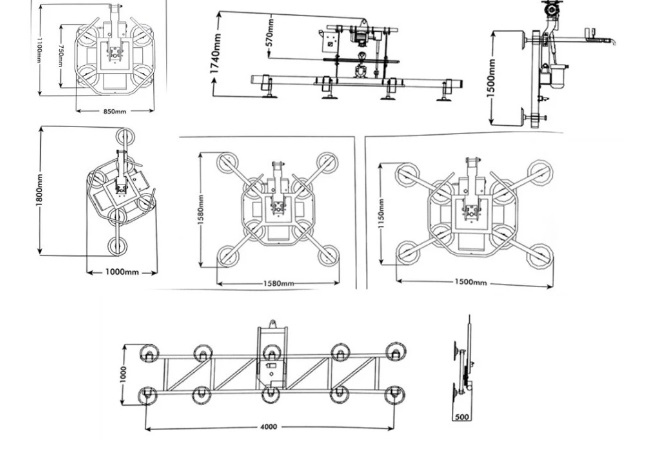
Common Materials of Vacuum Glass sucker
Keyword:Vacuum Glass sucker Time:2019-11-5 8:39:42
An amateur inventor in Britain has developed a vacuum suction cup powered by two vacuum cleaners, each with a giant suction plate connected to the backpack of the vacuum cleaner. He can crawl on the wall, just like Spider-Man. The inventor, Stansfield, bought two 1,500-watt vacuum cleaners at the supermarket. After removing the chassis, he mounted the two machines on a backboard and carried them back like a backpack. British men invented the vacuum glass sucker to transform themselves into Spider-Man wall climbing.
The long and long suction throats of the two shelling vacuum cleaners are connected with two vacuum suction plates. The suction plates are sealed with rubber to ensure strong suction. Stansfield hangs the vacuum engine backpack behind his back, then holds a vacuum suction plate in his hands, while his feet step on the long belt hanging from the suction cup. When the vacuum cleaner is operated, it can use the principle of suction to walk on the wall with two suction panels. When the suction panels are pushed upward, the footsteps cooperate with each other step by step, so as to climb up the wall step by step. With this vacuum glass sucker, he successfully climbed up the 30-foot high school wall step by step and went straight to the roof, which people were dazzled by.
Vacuum chuck material is also a key factor to determine its sealing performance. At present, the materials used in vacuum glass suckers on the market are nitrile-butadiene rubber, silicone rubber, polyurethane, fluorine rubber and so on. The glass sucker made of silicone rubber is suitable for grasping rough surface products; the glass sucker made of urethane is very durable. In addition, if the glass sucker is required to be oil-resistant in the actual production, the use of polyurethane, nitrile-butadiene rubber or polymer containing vinyl group can be considered to manufacture the glass sucker. The selection of specific materials should be determined according to the requirements of working environment for oil resistance, water resistance, wear resistance, heat resistance and cold resistance of glass suckers.
The degree of suction cup and the surface of the adsorbed workpiece directly affects the vacuum pressure in the suction cup. If the degree of suction cup is too poor, the vacuum degree of the suction cup is not easy to maintain, and the purpose of adsorbing the workpiece can not be achieved. When using vacuum glass sucker, we always hope that the part of the surface contacted by the workpiece and the glass sucker is smooth and sealed, which is conducive to the vacuum glass sucker firmly grasping the workpiece surface. However, it is only an ideal state. Usually the surface of the workpiece captured does not have such ideal conditions. The workpiece surface is either porous or rough. These factors directly affect the degree of suction cup and workpiece surface fitting. When the suction cup and the workpiece surface are in poor condition, the leakage phenomenon we often say will occur. There are usually two measures to remedy the leakage system:
(1) Use high-performance vacuum generator to make the leaked gas replenished in the shortest time. The disadvantage of this method is that there is still a large leakage in the system, and the energy consumption is high.
(2) Reduce the diameter or diameter of the glass sucker. The disadvantage of this method is that it can not reach the required vacuum level when the workpiece quality is large.


- No information
-
1. Design objective of electronic crane scale network management. (1) Adopt advanced distributed data processing techno…
-
Electronic crane scale bearing platform installation to focus Electronic crane scale can be installed generally on the li…


